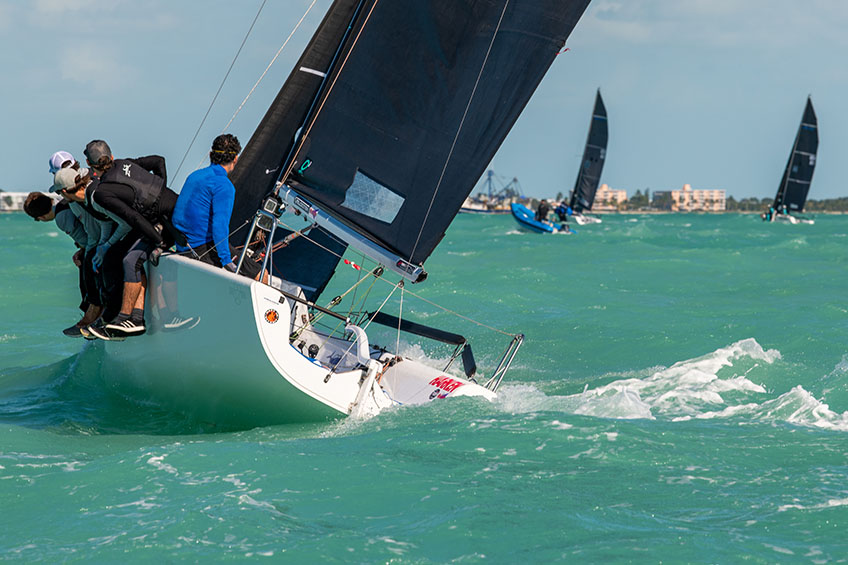A common refrain heard post race at bars and yacht clubs around the world, and a very tricky question. There are many possible causes, often interrelated. In our last installment of our four-part series, Quantum's Dave Flynn discusses heavy air.

It is a particularly vexing diagnosis for handicap sailors since fundamental differences between boats can make it an impossible task. Expecting a heavy, low power, limited draft design to be an upwind monster is just not being realistic. For one design sailors the problem can be more clearly defined and the finger pointed. In the immortal words of Pogo, “We have met the enemy and he is us.”
What constitutes “heavy air” is relative based on type of boat and experience level. I define it as the moment when controlling the heel becomes a problem and waves begin to have an impact on speed. Smooth water makes things easier, waves and chop make it hard.
Speed First
In many ways, the rules of light air setup to maximize pointing apply to heavy air. We make a full circle. In medium conditions we could “feather” and coast up in the puffs without losing speed. Now, with waves stopping us we need to protect speed first. If you get slow, the waves will kill boat speed and the boat will go sideways (not good for upwind VMG) in a heartbeat. Better to keep the bow down and boat speed rumbling (perhaps a little faster than normal targets) so you have the pace to keep going when the inevitable happens and you slam into a wave. In big swells you could try to steer up the face of the wave and then bear off down the backside, but usually we are sailing in waves that are too chopped up and close together to allow this technique to work. If a wave set is coming, put the bow down, go fast and crush them. A little extra heel can actually be a good thing. If the boat is flat when you hit a wave set it will pound and speed will drop quickly.
Ease Sails
To be able to put the bow down and go fast without creating too much heel and helm, you will need to ease sails. Twist (letting the top of the leech open up) is your friend just like it is in light air. In light air twist promotes flow, in heavy air it spills air and depowers. Ideally, both sails need to be eased in the puffs. On small boats it is important to have the headsail sheet led to the windward side so a small ease in the puff is possible. If you do everything with the mainsail the boat will be out of balance. How far can you ease? Whatever it takes to keep the boat on its feet. If the mainsail has to luff completely for a moment that’s okay, but it really is telling you that you need to ease the jib as well. In an ideal world you want to keep at least the bottom batten on the mainsail working. Both trimmers will have to be very active to help the helms person keep the boat upright and going fast.
Hiking, Tight Rig, Flat Sails
Everything you were doing with regards to hiking, rig tune, and sail shape stays the same as it was in medium conditions except, do even more of the same!
-----------
Read Part 1 focusing on pointing in light air, Part 2 about the transition phase between light and medium air, or Part 3 on optimum/medium air conditions.